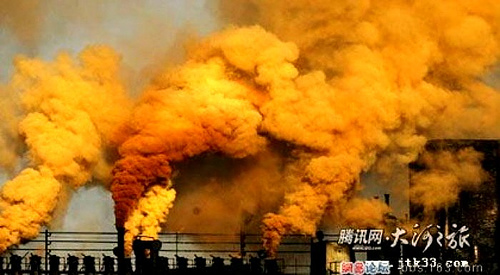 China has enacted many harsh laws against pollution – some even stricter than in the United States (McDermott). The effectiveness of those laws is often, in the words of Peking University’s law professor Wang Jin, “useless.” From 1979, about 10% of all laws introduced have been related to the environment, energy, and renewable energy. Yet those laws have failed to prevent mass pollution or reduce disputes over pollution, which have increased 20-25% every year for the past fourteen years (Wang Jin).
China has enacted many harsh laws against pollution – some even stricter than in the United States (McDermott). The effectiveness of those laws is often, in the words of Peking University’s law professor Wang Jin, “useless.” From 1979, about 10% of all laws introduced have been related to the environment, energy, and renewable energy. Yet those laws have failed to prevent mass pollution or reduce disputes over pollution, which have increased 20-25% every year for the past fourteen years (Wang Jin).
According to Wang Jin there are three main reasons why China’s environmental laws have failed: 1) the basic legal system is incomplete; 2) the laws that have been enacted aren’t particularly well crafted; 3) the overall aims of a law often contradict the articles of the law. An example that Wang Jin gives is that in May 2010, the government of Guzhen county fired six local environmental-protection officials, since they had checked up on one firm three times within a 20-day period for pollution infractions. The government fired them on the grounds that the officials’ acts were damaging efforts to attract investment. A local Anhui province law requires environmental authorities to obtain approval before making checks. Other places are following suit, with the result that local government is protecting the biggest polluters and energy consumers
In addition to this, according to the director of NRDC’s Environmental Law Project, even if there are laws that protect environmental sustainability, there is still a chronic lack of enforcement of laws and regulations. At times damages can be denied for plaintiffs or factories will be allowed to continue producing carcinogenic externalities even if victims can prove a direct link to their injuries, because of corruption and the aforementioned contradictions of the law. Also, the maximum penalty that a factory needs to pay annually for pollution infractions is merely $100,000, says Matthew Collins, a project manager at a powerful NGO in China that was responsible for reporting Apple’s poor environmental records to the world, Institute of Public and Environmental Affairs (IPE) who I interviewed in China. As the fine is relatively small for factories that have larger profits, they simply pay the fine and continue polluting. The fine provides little incentive for these factories to reduce their pollution waste.
There are however exceptions where the government does enforce laws and regulations. For example, The China Price, discusses how Shenzhen officials turned down an Italian businessman that wanted to open a leather tannery on the grounds that his “factory was too polluting,” so he had to settle “in Xiaolan… spend $200,000 on a water treatment system to ensure that he didn’t discharge toxic chemicals into the water supply” (Harney 268).
Additionally, the government has made pollution environmental data and reports of externalities from factories public information that can be accessed online through IPE’s website. This has lead to the leaking of the environmental infractions of Apple factories. However, there is still a lot of mistrust in the government’s data.
Despite such improvements, China is still ravaged with many problems. The government has done little to tackle air pollution; so far it seems like more talk than action. A recent MIT study shows that there has been “an improvement in air quality,” but this is only relative to China’s growth, meaning that overall pollution still has increased. In fact, China emitted more greenhouse gases than the US and Canada put together has – up by 171% from 2000 – according to the Energy information Administration 2011 report. Pollution healthcare-related costs have sky-rocketed “from $22 billion in 1975 to $112 billion in 2005,” according to a MIT report, and “40% of china’s rivers are polluted with industrial waste,” according to government official Jiao Yong. Also, in September, 30 people who protested against businesses that polluted Haining were arrested. Among those arrested was a man who blogged that local pollution has caused cancer in 31 inhabitants of his village, according to NY Times.
There are some positive signs of China enforcing some laws supporting environmental sustainability, but it is such a massive country that is still developing. Priorities still lie in developing the nation more, but with the government’s recognition that pollution impedes growth, it is forcing them to take a few steps to tackle it.



